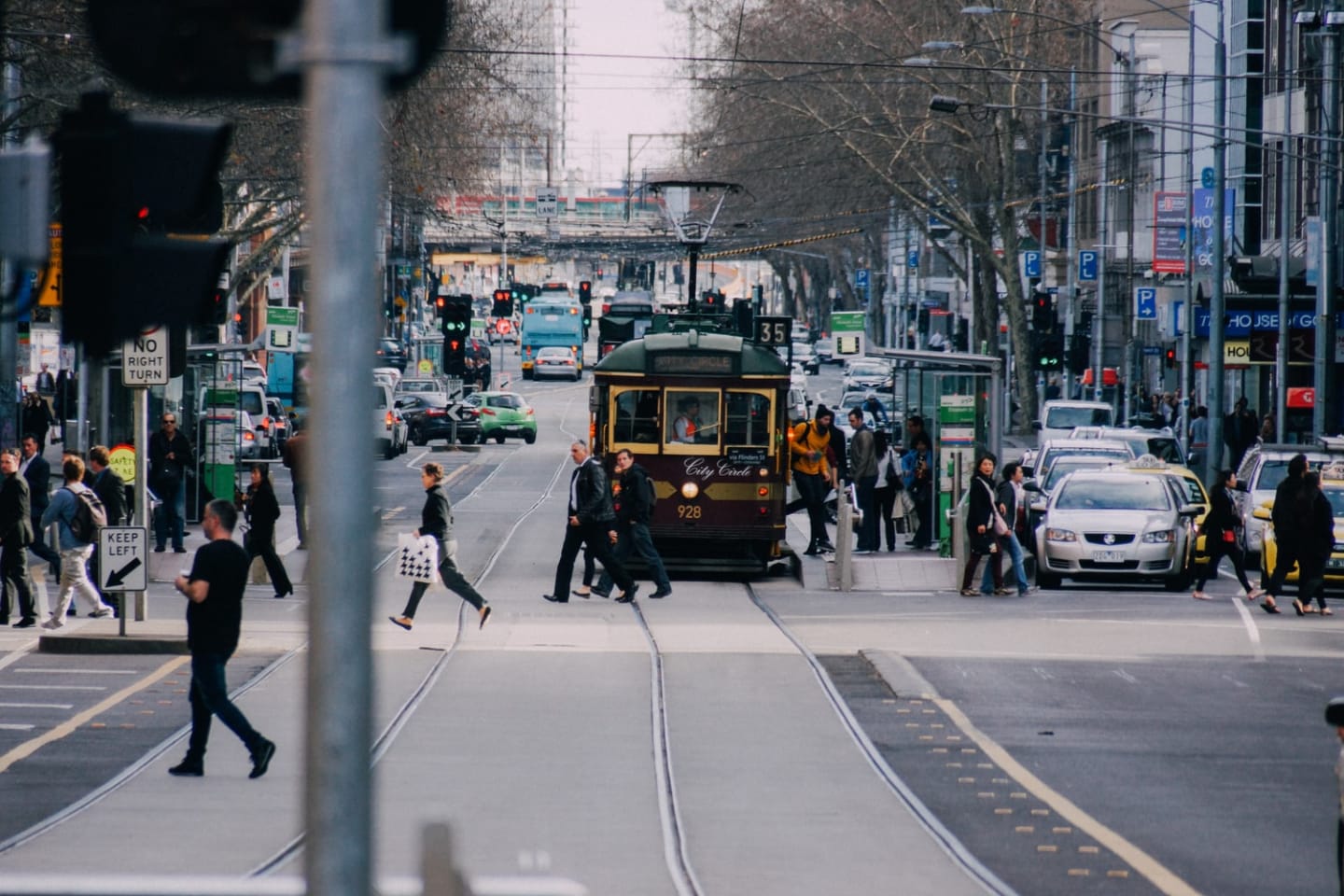Melbourne’s revised Transport Strategy 2030 aims to deliver $870 billion boost to economy
Victoria’s Transport Strategy 2030 was first presented to the Future Melbourne Committee in May this year. After considering almost 2000 feedback submissions from the community, the revised strategy will now be leading the agenda discussion at tomorrow evening’s committee meeting.
The Transport Strategy 2030 will aim to provide better infrastructure for vehicles, pedestrians and cyclists to navigate the CBD in an efficient, safe and harmonious way; while also boosting the economy by approximately $870 billion (2019 dollars) over the course of a decade.
“We are seeking the right balance between all modes of transport. We need all modes to work together for a liveable city, from building separated bike lanes for those riding, widening footpaths for pedestrians, introducing on-street parking bays for our motorcyclists and creating speed consistency for our motorists.”
Lord Mayor Sally Capp
Several months of community engagement, significant research, and workshops with the Victorian Government and its transport agencies were undertaken to ensure every person has been accounted for in the strategy, and factors such as liveability, productivity, prosperity, and sustainability were addressed.
Phase one research findings
1. WALKING
2. CAR SPACE
3. PUBLIC TRANSPORT NETWORK
4. EMERGING TECHNOLOGY
5. BICYCLES FOR EVERY DAY TRANSPORT
6. CAR PARKING
7. MOTOR VEHICLES
8. ROAD USER PRICING
By 2036, another 500,000 people will be moving to Melbourne city and surrounding suburbs daily. The 10-year master plan will aim to accommodate this rapid population growth and mitigate congestion in the city and broader community.
“We have thought very carefully about the kind of Melbourne we want and need in order to boost prosperity and efficiency but also to be a place for people to meet, dine outdoors, shop and have space to enjoy everything our city is famous for… We can achieve this by alleviating congestion on our footpaths, where 89 percent of trips are made, by welcoming people whose end destination is the city, by committing to make Melbourne the nation’s leading bicycle city and by creating great civic destinations around our city stations.”
Cr Frances Gilley
What is likely to be implemented within the Transport Strategy 2030?
The first four years are likely to see the following projected actioned:
- Protected cycle lanes on Exhibition Street, Latrobe Street Bridge, and Rathdowne Street
- 300 new on-street motorcycle parking spaces as an alternative to parking on the footpath
- A speed limit reduction to 40km per hour, reducing speeds in Parkville Gardens, North and West Melbourne and Yarra’s Edge.
- Maintain ease of access for essential car trips to the city: including for those with a disability, trade service vans, and emergency vehicles
Cr Frances Gilley explained that inconsistent speed zones are a current challenge for drivers.
“If you’re driving in from the east you have 40km/h on the local streets in the City of Yarra, then 50km/h in East Melbourne before reaching the central city where it’s 40km/h again. Parkville, Yarra’s Edge and other city fringe suburbs are all built-up areas with schools, shops, parks and lots of pedestrians and cyclists. By bringing them into line with 40km/h it would be much simpler for motorists, will avoid dangerous sudden stoppages and be much safer for people walking and riding bikes.”
Cr Frances Gilley
Other significant improvements include:
- Trials of lowered speed limits on Melbourne’s ‘Little Streets’ to facilitate pedestrian-friendly walkable zones during peak times.
- Council will advocate for a tram extension to Fisherman's bend.
- Repurpose the equivalent of over 6 MCGs (Melbourne Cricket Ground) worth of public road and parking space to create zones for pedestrians, cyclists, urban greening, commercial trading and more.
- Work with the Victorian Government to deliver safer public domains around Melbourne’s stations
- Ensure Melbourne becomes Australia’s leading bicycle city by creating an additional 50km of protected on-road cycle lanes.
Projected economic boost
- A Deloitte Access Economics Report found that the reprogramming of traffic signals could generate an annual economic benefit of at least $15.4 million
- By prioritising the 165,000 trams, they could move 20% faster, with a projected economic benefit of $24.9 million extra annually
- Retail and hospitality spending due to more foot traffic and improve safety, Retail and hospitality spending contributes to a combined $5.7 billion revenue annually, so by cultivating more enjoyable and safer retail and hospitality precincts, this number could see an increase
“It’s very exciting to be considering this strategy after a two-year process of speaking with our community about their needs, liaising with transport experts and our colleagues in state government. As a result, we have a robust plan that if endorsed, will deliver significant community benefits and realise our ambition for an even more beautiful, safe and welcoming world-class city.”
Cr Frances Gilley
Lead image credit: Weyne Yew. Infographic sources: Transport Strategy 2030.
